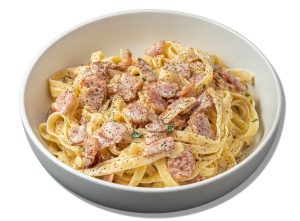Pasta is a staple of weeknight dinners and is high in carbohydrates. Its sauce also provides fibre and nutrients. Plus, you can add vegetables to make them more nutritious. You can also cook it in small portions and freeze it to keep it fresh. Here are some tips to help you prepare takeaway pasta at home.
Reheating leftovers
There are many challenges when reheating pasta leftovers, particularly if the pasta is cooked in a sauce. Luckily, a few tips will help keep your pasta from becoming a dry, gummy disaster. First, store the pasta in a tightly sealed container in the fridge. Then, use one of these tried and tested reheating methods.
 Keep leftovers refrigerated for at least three days. Food left out for longer than this should be consumed within two days. However, you can store leftover pasta at room temperature for longer if it has not been refrigerated. Good Food also recommends reheating food at a temperature of at least 165 degrees Fahrenheit.
Keep leftovers refrigerated for at least three days. Food left out for longer than this should be consumed within two days. However, you can store leftover pasta at room temperature for longer if it has not been refrigerated. Good Food also recommends reheating food at a temperature of at least 165 degrees Fahrenheit.
When reheating leftovers, always remember that reheating food is dangerous because bacteria multiply when it cools too quickly or reheats insufficiently. Therefore, it is vital to follow the temperature recommendation of the food and consume it within two days. This way, you can avoid the risks of food poisoning and keep your food for later use.
While you may be tempted to eat cold leftovers, remember that they are still food and will eventually go bad. While it is tempting to eat cold pasta, you may feel a little more like an adult when your food is warm again. Some people may also wonder if they should reheat the leftover fried chicken, dumplings, fish, and French fries before eating them.
If you don’t want to spend the extra money on a restaurant, you can always reheat the leftovers in the microwave. However, it is important to remember to separate the pasta and sauce before reheating them. Otherwise, the pasta could get dry and mushy.
Once the leftovers are in the fridge, you should use them within one to two months. It prevents this; remember to keep them in an airtight container or resealable plastic bag. Moreover, to make them into a lunch meal put the leftovers in the fridge and reheat them the next day.
Storage of leftovers
Pasta leftovers can be stored for up to two days. To store the pasta safely, store it on the top shelf of your refrigerator. This cool temperature will prevent bacteria from growing. It also helps to label the containers to identify the contents. Be sure to put the date on them as well.
Pasta with sauce freezes well, so use a large freezer bag to keep it cool. Make sure to press out any air before sealing. Use a thin freezer bag rather than a thick one. A freezer bag will ensure that the pasta does not clump together when reheated. It’s also useful to mark the date on the bag or container so you can use the leftovers before the date they expire.
Keep the rest in the fridge if you’ve ordered a large portion. It will keep for three to four days, but the risk of food poisoning increases. Bacteria in food can cause food poisoning if the food remains unrefrigerated. Once the food reaches 165°C, the bacteria will no longer be present. However, if the leftover pasta doesn’t have this temperature, it should be thrown out.
Keep the pasta separate from other foods. Avoid storing leftover rice. Leftover rice can contain a bacteria called Bacillus cereus. This bacteria produces a toxin when left out for a long time. Bacillus cereus can affect other leftovers too. For example, leftover pasta with sauce can be stored for up to three days.
If you have leftovers, keep them refrigerated for another meal. It is best to reheat the pasta and rice in small portions rather than leaving them to cool overnight. Make sure to keep it covered. It is best to avoid reheating leftovers from a takeaway. Instead, prepare a new dish from the food leftovers.